TUFLOW 2D Cell Size Selection: Difference between revisions
Chris Huxley (talk | contribs) |
Chris Huxley (talk | contribs) |
||
| Line 4: | Line 4: | ||
=Introduction= |
=Introduction= |
||
This page of the TUFLOW Wiki discusses 2D cell size convergence. Cell size convergence refers to the tendency for model results to tend towards a common answer as cell size decreases. This behaviour occurs due to topographic features that influence the hydraulic flow behaviour better approximating reality as resolution increases. The series of creek cross-section images below demonstrate this. As model resolution increases from 20m to 5m the modelled topography progressively matches the real-world geometry more closely.<br> |
This page of the TUFLOW Wiki discusses 2D cell size convergence. Cell size convergence refers to the tendency for model results to tend towards a common answer as cell size decreases. This behaviour occurs due to topographic features that influence the hydraulic flow behaviour better approximating reality as resolution increases. The series of creek cross-section images below demonstrate this. As model resolution increases from 20m to 5m the modelled topography progressively matches the real-world geometry more closely.<br> |
||
[[File:Mesh_Converge_XS_20m.png| |
[[File:Mesh_Converge_XS_20m.png|500px]][[File:Mesh_Converge_XS_10m.png|500px]][[File:Mesh_Converge_XS_05m.png|500px]]<br> |
||
[[File:Mesh_Converge_XS_10m.png|400px]]<br> |
|||
[[File:Mesh_Converge_XS_05m.png|400px]]<br> |
|||
= Test Case 1 - Scenario Assessment = |
= Test Case 1 - Scenario Assessment = |
||
Revision as of 14:55, 14 August 2018
This page is currently under construction.
Introduction
This page of the TUFLOW Wiki discusses 2D cell size convergence. Cell size convergence refers to the tendency for model results to tend towards a common answer as cell size decreases. This behaviour occurs due to topographic features that influence the hydraulic flow behaviour better approximating reality as resolution increases. The series of creek cross-section images below demonstrate this. As model resolution increases from 20m to 5m the modelled topography progressively matches the real-world geometry more closely.

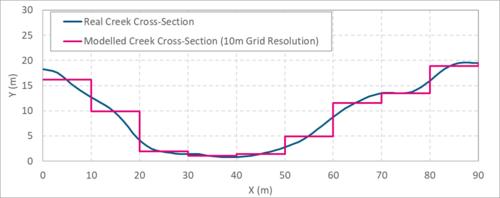

Test Case 1 - Scenario Assessment
Test Case 1 - Model Description
This test is designed to simulate flood wave propagation down a river valley following the failure of a dam. The valley DEM is ~0.8 km by ~17 km and the valley slopes downstream on a slope of ~0.01 in its upper region, easing to ~0.001 at lower elevations.


The inflow hydrograph shown below is applied as a boundary condition at the upstream end of the valley.

Test Case 1 - Results
| Cell Size | Location 4 Result | Location 5 Result | Mesh Resolution Figure |
| 10m | 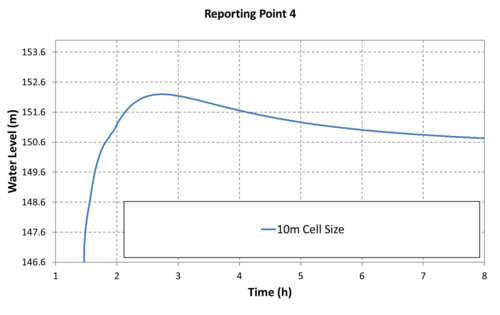 |
 |

|
| 20m |  |
 |
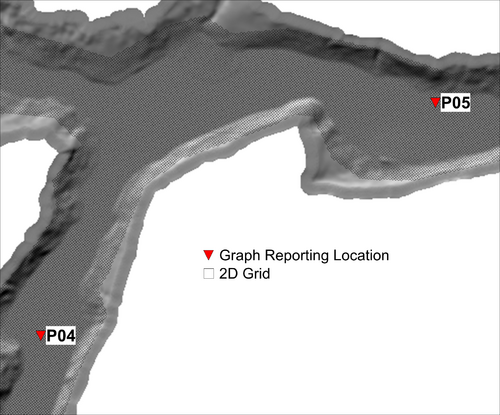
|
| 50m |  |
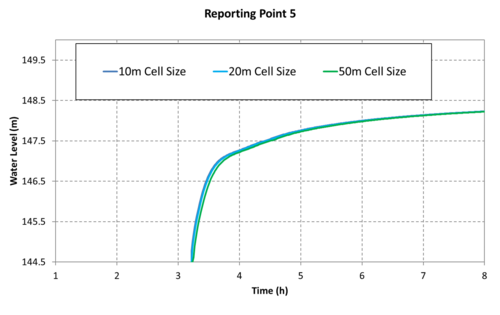 |
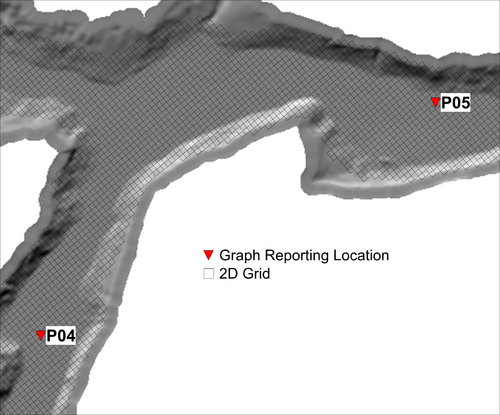
|
| 100m |  |
 |
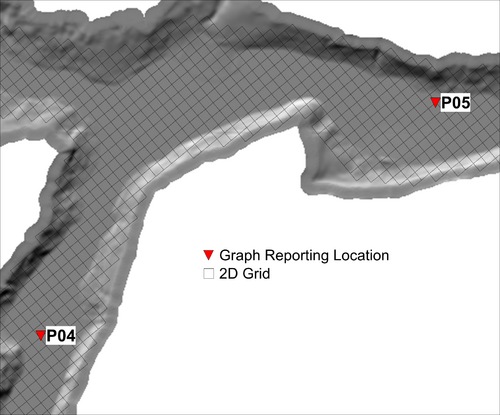
|
| 150m | 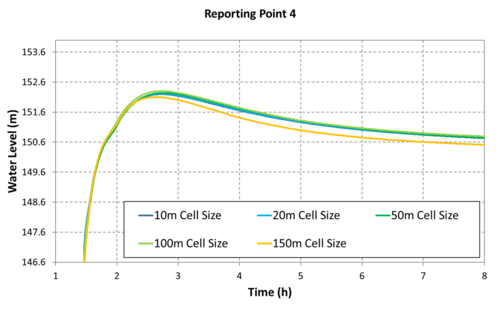 |
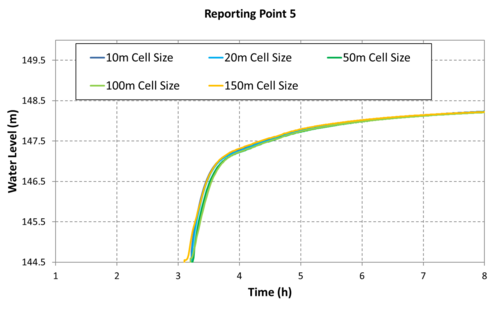 |
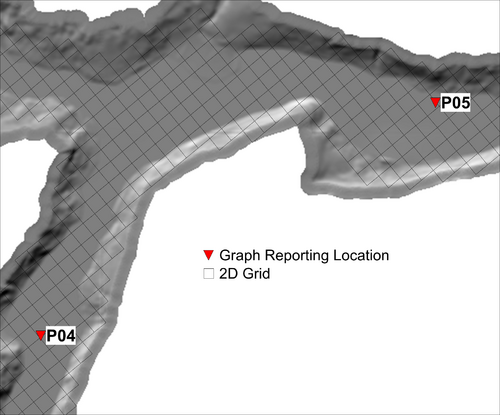
|
| 200m | 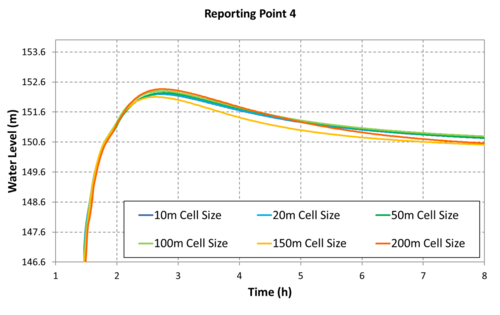 |
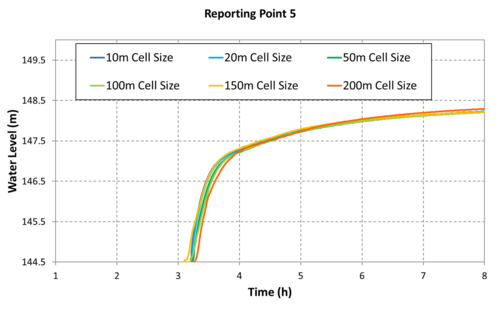 |

|
| 250m | 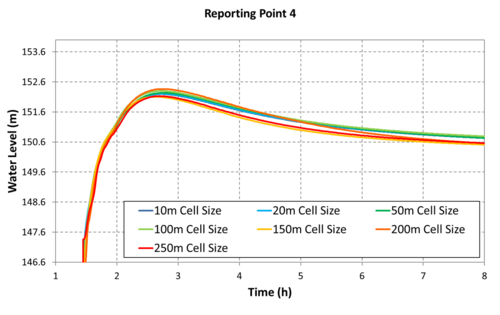 |
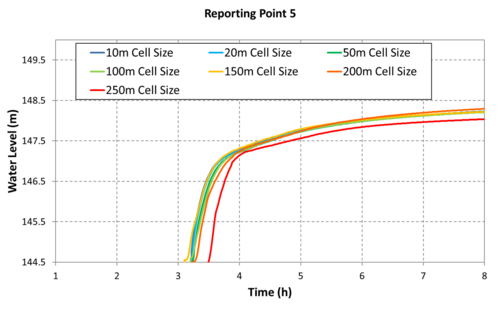 |

|